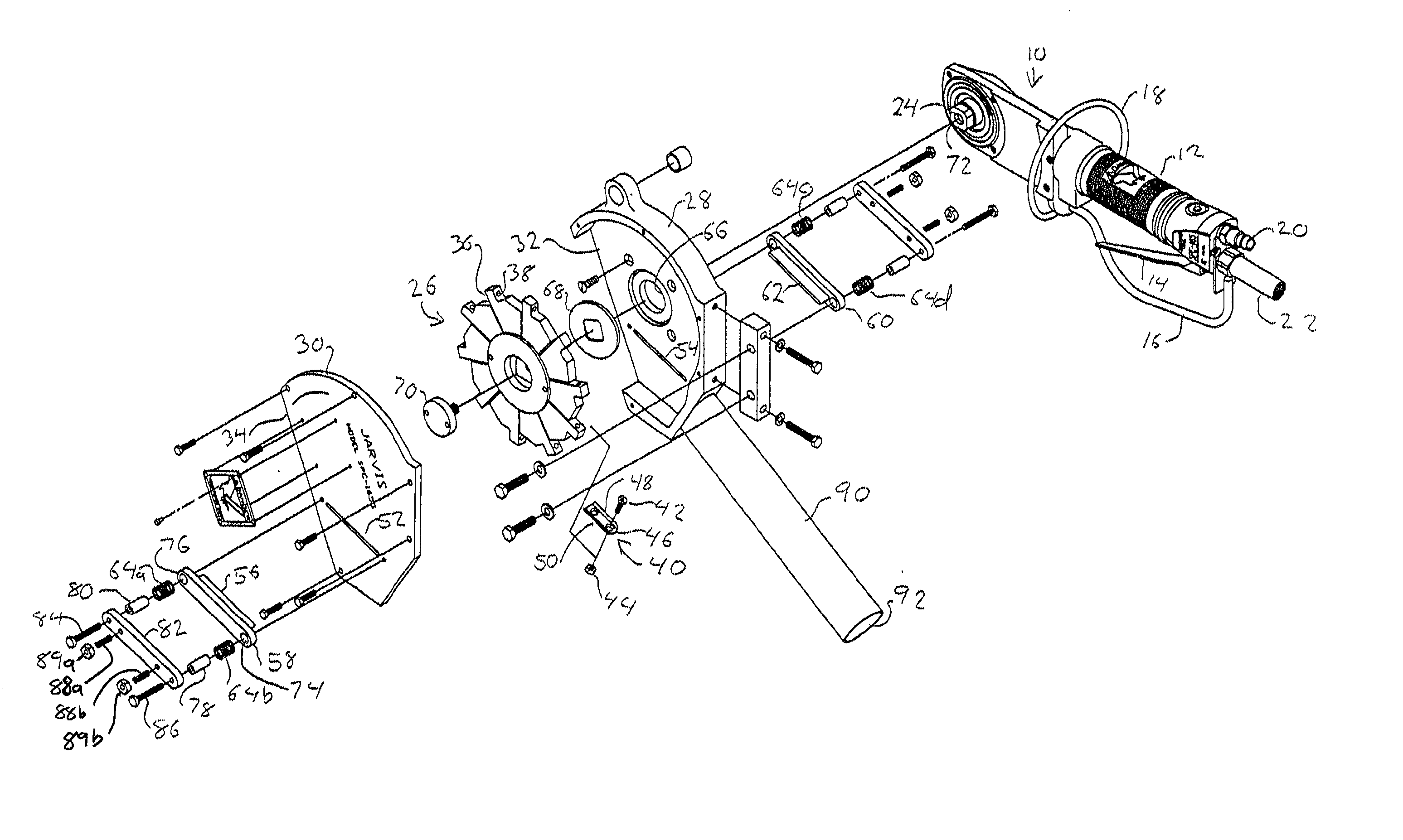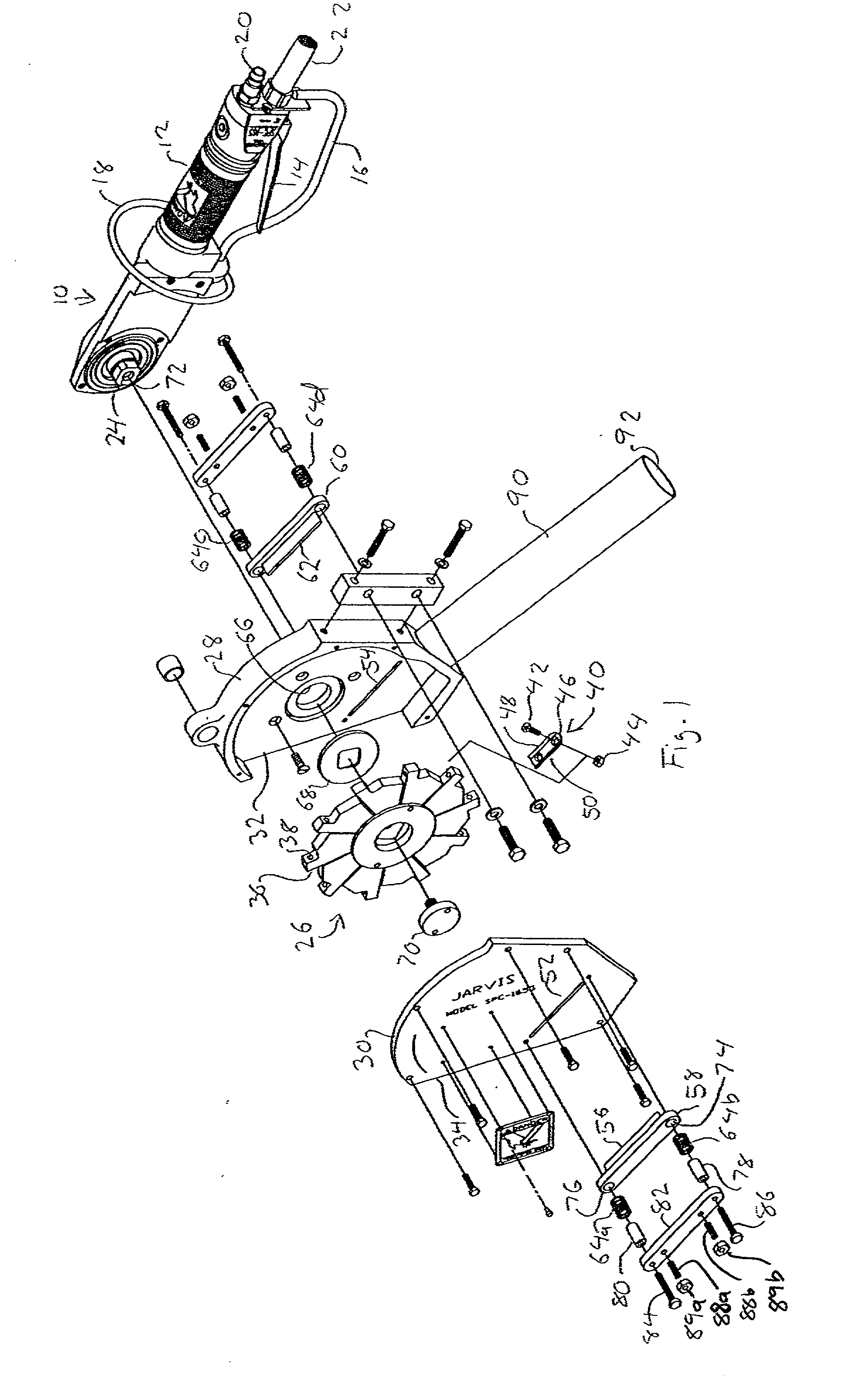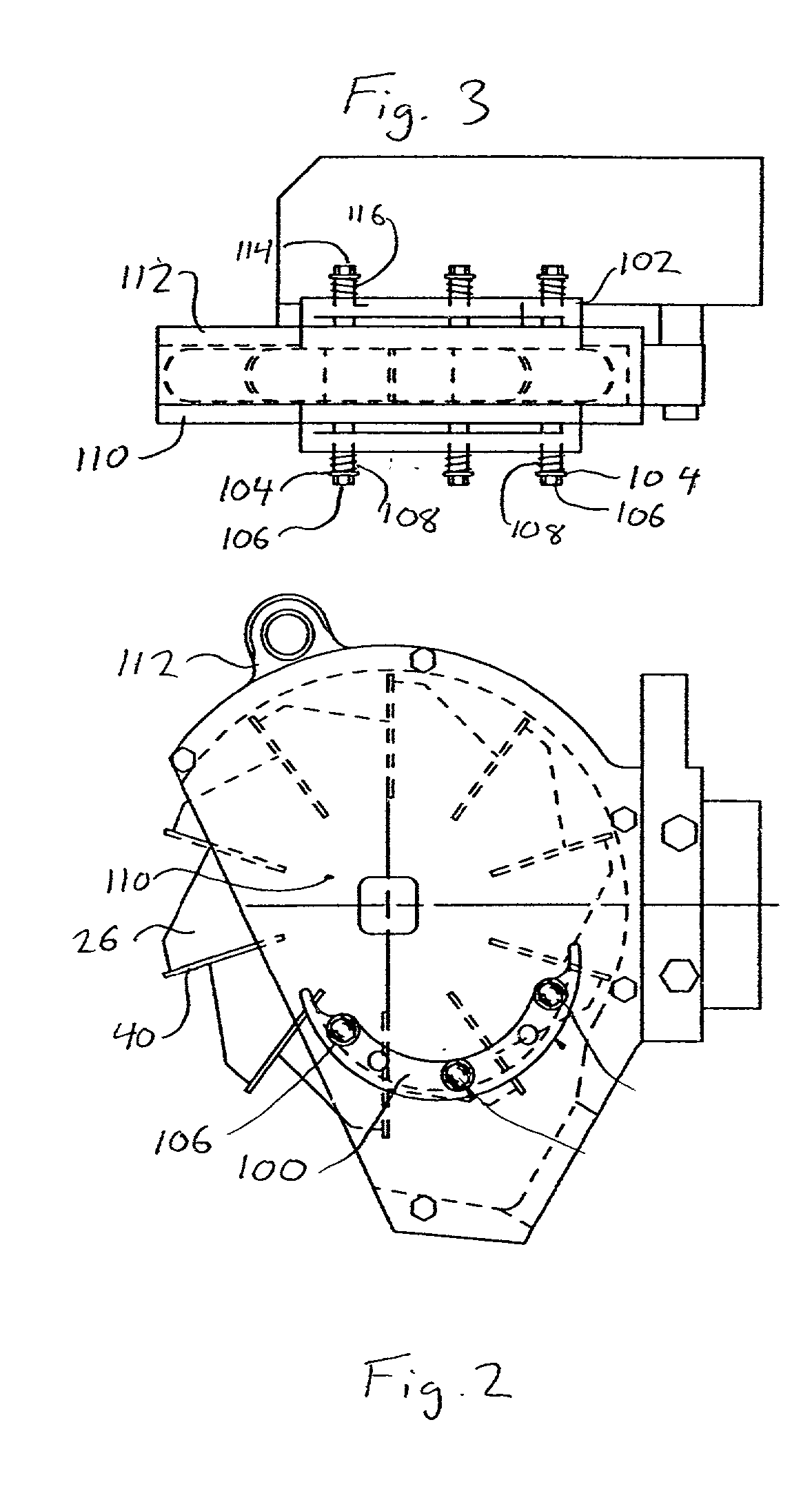Spinal cord removal tool with adjustable blades
a technology for removing tools and spinal cords, applied in the field of spinal cord removal tools, can solve the problems of affecting the operation of the tool and the proper removal, affecting the removal of spinal cords, and elongating the spinal cord membrane, so as to achieve accurate control, increase the support of the blade, and operate at a higher speed
- Summary
- Abstract
- Description
- Claims
- Application Information
AI Technical Summary
Benefits of technology
Problems solved by technology
Method used
Image
Examples
second embodiment
[0041] FIGS. 2-3 illustrate the present invention. In this design the left and right side blades 100 and 102 are curved and are always in contact with at least three of the side cutting edges 48, 50 on the removal blades. This additional contact provides greater blade stability during high-speed operation and reduces the likelihood of blade chatter. The right and left side adjustment mechanisms for the curved side blades 100 and 102 are similar to the adjustment mechanism described in connection with the straight blades shown in FIG. 1 except that three mounts are used, instead of two, and the function of support plate 82 has been replaced by an enlarged head 104 on the mounting screws 106.
[0042] The left side adjustment mechanism includes three left side mounting screws 106 with corresponding left side springs 108. The left side mounting screws 106 are threaded into the cover 110 which includes a curved slot to receive the curved cutting edge of the left side blade 100. The curved ...
third embodiment
[0046] FIGS. 4-6 show the present invention in which the side blades 200 and 202 are straight, similar to the design in FIG. 1, but the right and left adjustment mechanisms hold the side blades in a fixed location, instead of allowing them to float as in the two previously described embodiments of the invention. The side blades in this design are manually adjustable towards and away from the side cutting edges 48 and 50 on the blade disk. This allows the side blades to be adjusted to minimize or eliminate any blade chatter during the highest operation speeds. It also helps to minimize blade noise resulting from contact between the side blades and the side edges of the removal blades during high-speed operation.
[0047] In this design the side blades 200 and 202 include internally threaded openings 204 that receive adjustment screws 206. The adjustment screws 206 are externally threaded to match the internal thread of openings 204 in the side blades. The adjustment screws 206 are also ...
PUM
 Login to View More
Login to View More Abstract
Description
Claims
Application Information
 Login to View More
Login to View More - R&D
- Intellectual Property
- Life Sciences
- Materials
- Tech Scout
- Unparalleled Data Quality
- Higher Quality Content
- 60% Fewer Hallucinations
Browse by: Latest US Patents, China's latest patents, Technical Efficacy Thesaurus, Application Domain, Technology Topic, Popular Technical Reports.
© 2025 PatSnap. All rights reserved.Legal|Privacy policy|Modern Slavery Act Transparency Statement|Sitemap|About US| Contact US: help@patsnap.com



